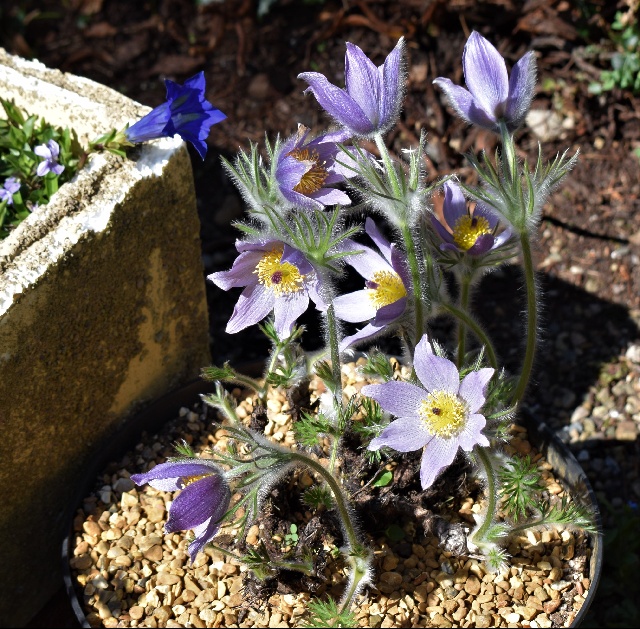Height up to 15cm in flower, much taller in fruit. Basal leaves densely hairy especially when young, pinnate with three to five leaflets, the terminal one long-stalked, all leaflets pinnatifid with oblong lanceolate lobes. Stem leaves stalkless. Flowers appear before the leaves, erect, shallowly to deeply campanulate, 4-9cm across, lavender to violet-purple. Central and south-eastern Europe, Crimea, in grassland and stony slopes at 1000-3000m. This appears to be the eastern representative of the P. vulgaris complex, distinct in its more coarsely dissected leaves (which are usually densely hairy), and in having less deeply bell-shaped flowers before the leaves. Several subspecies of P. halleri may be available, often listed as species or as subspecies of P. vulgaris: subsp. grandis is exceptionally hairy, the hairs silvery or tawny, and 'Budapest' is considered to be a selected variant of it, with golden hairs and lavender-blue flowers. Subsp. halleri from the south-western and central Alps has five primary leaf division, and dark violet flowers. Subsp. slavica from the Carpathians has three primary leaf divisions, with the laminae 3-7cm long, and similar flowers. Subsp. styriaca from south-eastern Austria is similar to subsp. slavica but has leaflets 5-11cm long. The subspecies so far mentioned are usually over 5cm high at flowering, and have fewer than fifty lobes to the leaves. Two other subspecies are usually 5cm high or less at flowering, and have leaves with fifty to one hundred lobes. In subsp. rhodopea from the Balkans the leaves have short petioles, whereas in subsp. taurica from Turkey they are sessile.


Sign up for our newsletter to receive our monthly update direct to your inbox. Featuring our latest articles and news.
Built by Atomic Smash

